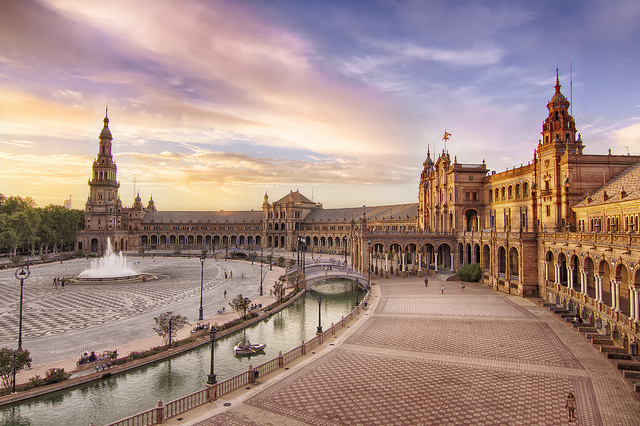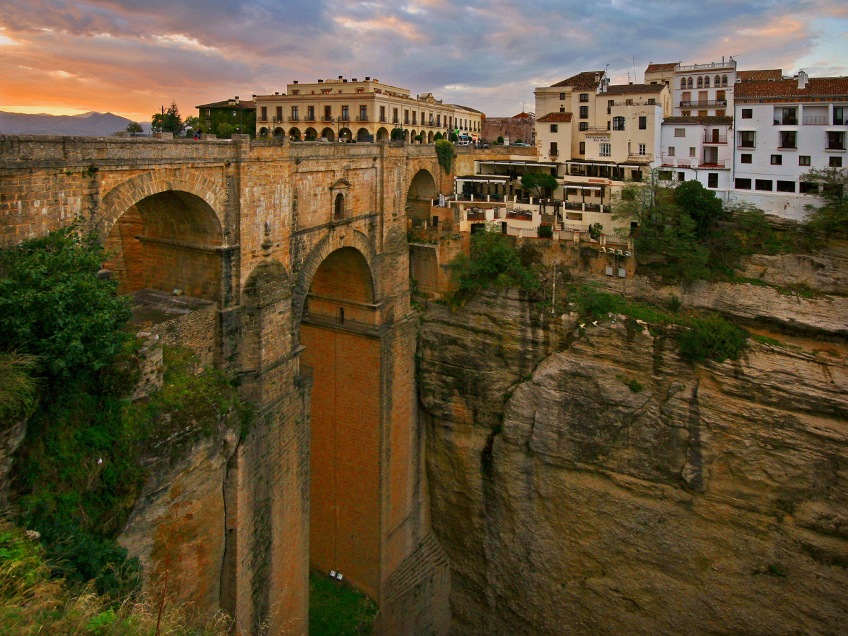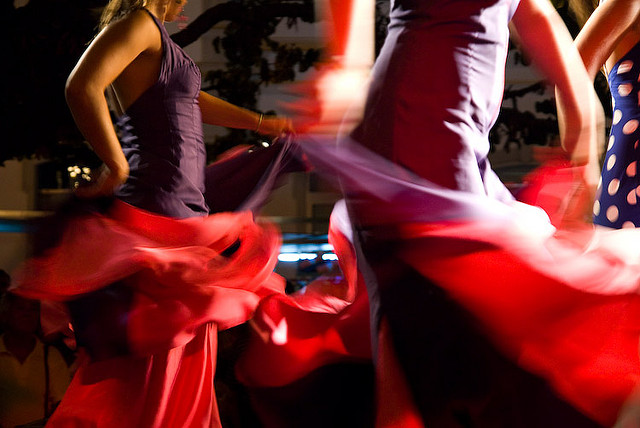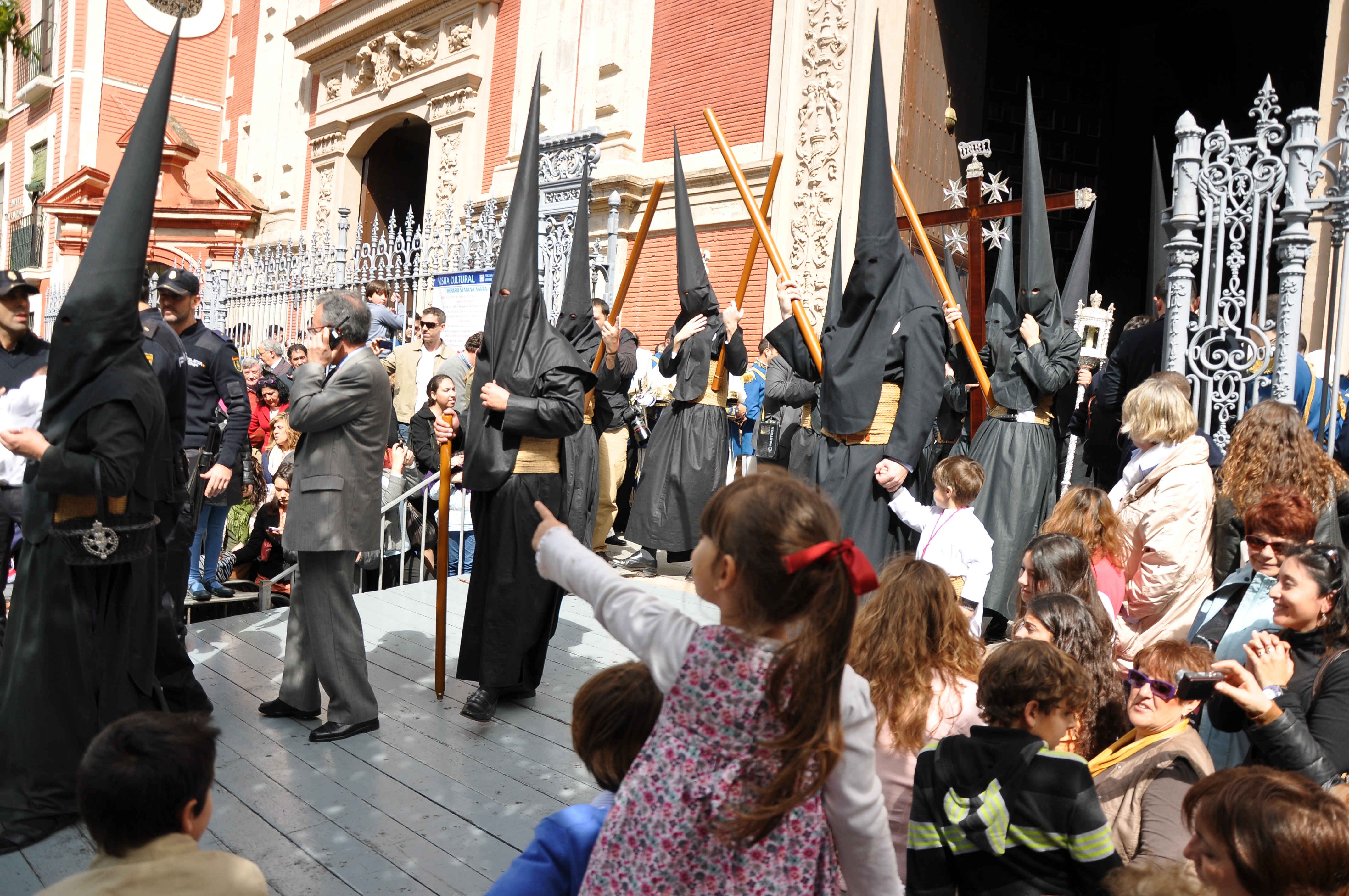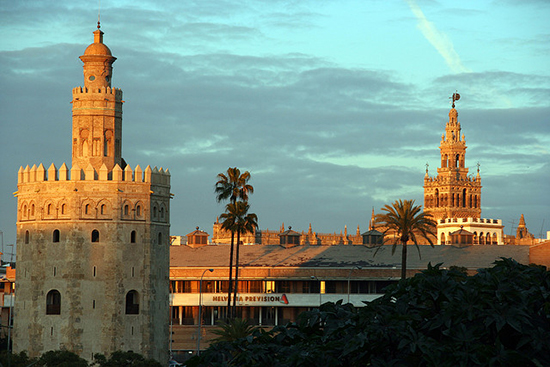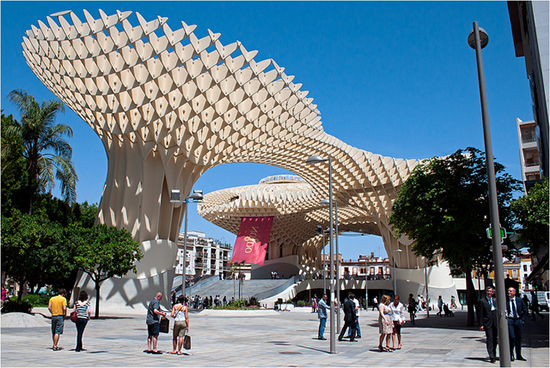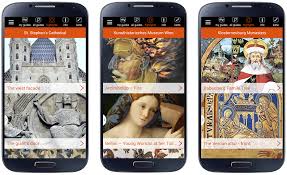All About Seville’s Plaza de España
Any avid traveler needs an active imagination. When visiting places and monuments we often wonder, who designed this cathedral? Why did the main tower burn down? How long did it take to build this bridge? And that’s why we need expert guides to tell us all about past events. Well, we’ll be your guide today. Close your eyes and place yourselves in Seville, a century ago. The year 1914 marked the start of all construction work on Plaza de España by architect Aníbal González, whose statue adorns the square today. Designed with the occasion of the Ibero-American Exposition of 1929, the square would not be fully completed until one year before the event. This is a brick monument representative of the regional architecture, characterized by its reflection of the aesthetics of the site, including decorative ceramics, woodwork, cast iron and carved marble. For those not fortunate enough to have visited, Seville’s Plaza de España, it is shaped like an oval over 200 meters in diameter. The oval is circumscribed within an impressive building with a tower at each end of the North and South wings, symbolizing Spain’s embrace over its new world colonies, and facing the Guadalquivir river, which was the way to America. Besides the grand fountain at its center, there is also a canal with four bridges representing the old four kingdoms of Spain (Castile, Leon, Aragon and Navarre). On the inner circumference of the semicircle, we find a series of benches, each of them decorated with a relevant historical event, the coat of arms and the map of each of the forty-eight Spanish provinces. Starting...The Best Towns in Southern Spain
Andalusia: its summer heat, the colors of its streets, its charming little villages, its heavy southern accent, its flamenco dances, its cuisine, its rich history… Just breathtaking! Open your eyes wide and let us take you on a route through some of the prettiest towns in southern Spain. Ronda Ronda, northwest of the province of Malaga, is one of the oldest towns in Spain. The Tajo River crosses Ronda’s old town, dividing it into two parts connected by the Puente Nuevo, a 100 meter tall bridge with picturesque views over the city. The labyrinth-like streets of Ronda are a constant reminder of its Muslim past. Don’t leave without visiting its famous bullring, built in stone. Vejer de la Frontera Vejer de la Frontera is a village in the province of Cadiz, built atop a 190m tall hill, on the banks of the Barbate River. It is known for its walled historic center and the historic-artistic ensemble formed by its castle, with amazing views, and its numerous churches. There is nothing quite like exploring its narrow, steep streets, and delighting in the view of its palm trees and white houses before heading to Plaza de España, with its beautiful fountain, for something to drink. Úbeda Úbeda is a small town in the autonomous community of Jaén, facing the Sierra Mágina massif. This town is regarded as one the maximum exponents of the Spanish Renaissance, and was declared a UNESCO World Heritage Site for its renaissance buildings, such as the palace of Las Cadenas or the church of Santa María de los Reales Alcázares. A short wander through...What You Didn’t Know about the Seville April Fair
Seville smells of orange blossoms and the albero sand of its fairgrounds. Seville is a special color; a color which, in April, intensifies, attracting thousands upon thousands of visitors from every corner of the globe. The Alumbrao (lighting), and the décor of the casetas at El Real, the music, the elegant flamenco dresses, the art, the rebujitos and the manzanilla are the main protagonists of an age-old celebration that kicks off on Tuesday April 21st. Be sure to mark your calendars because this is truly promising. So if you like flamenco and good eats, you can’t miss out on Seville’s Feria de Abril.
Holy Week in Seville
All serious travelers should experience Seville’s Holy Week at least once in their lifetime. This liturgical festivity that takes place in the Andalusian capital is a vibrant display of passion for tradition; a passion that permeates every corner of Seville during the days of celebration. This year, the Sevillian Holy Week begins on March 29th, and ends on April 5th, coinciding with Easter Sunday. During the celebration the city dons its festive attire, and 60 fraternities and cofradías (church brotherhoods) take over the streets of Seville, with more than 120 pasos (floats) commemorating the passion and death of Jesus Christ. Ready to experience a liturgical celebration of medieval origins during your Easter holidays? Follow in our footsteps through the Andalusian capital: In the Footsteps of Jesus Christ Seville’s Holy Week was declared Fiesta of International Tourist Interest in 1980, and together with the Feria de Abril it is one of the city’s biggest festivals. Its origins date back to the Middle Ages, but it wasn’t until the end of the 19th century, during the Spanish Restoration period that brotherhoods gained momentum and became a tourist attraction. In their early days processions followed routes revolving around the vicinity of their home church, but nowadays the Carrera Oficial (or Official Path) of the brotherhoods must necessarily end at Seville’s Cathedral. This joint route departs from the Plaza de la Campana, passing through Calle Sierpes, Avenida Constitución, and ending up at the Cathedral. There is one procession per day, with those of Good Friday, Holy Saturday, and the popular ‘madrugá’ (the most anticipated night of Seville’s Holy Week) being among the most...Discover Andalusia by Car
Andalusia is one of the most beautiful areas in Spain, but to see all it would take many more days than we mere mortals usually have for vacation. That´s why dividing it up is a great idea, plus you’ll have an excuse to return and discover another part. The best way to discover Andalusia is by car, and there’s a starting point from which each day you can see the best of the region in just 60 minutes. That starting point is the city of Seville. Photo: jtoledo On your first day, you’ll head out from Sevilleto visit the province of Huelva, which is known for its coastline and fishing villages where you can sample the best Andalusian cuisine at extremely affordable prices. One of those villages is Isla Cristina, a fishing village known for its tapas bars and exquisite fish, especially the famous pescaíto frito (fried fish) which will delight any seafood fan. After eating your fill, it might be a good idea to take a walk around. An excellent place to do this is Ayamonte, a town on the border with Portugal and along the river Guadiana. Its sunny squares are the ideal spot to relax and enjoy a few beers. The village’s white houses make this town one of the most beautiful in the entire region. After the gastronomic tour de Huelva, one should visit a place that is pleasing to the eye, and what place is more suited to that than the Doñana National Park. This park is located less than an hour from Seville and is a must-see when in Andalusia. Declared a...The Metropol Parasol in Seville
The plaza de la Encarnación (Square of the Incarnation), which is located in the heart of Seville, is one of the most emblematic spots in the city. A few years ago, it was decided that this urban space should be revitalized and the city held a competition for ideas to create a building or something similar to give it a stronger presence and identity. German architect Jürgen Mayer won the prize. He designed the curious wooden structure that now resides on the Plaza de la Encarnación. It is called the Metropol Parasol, but given its special shape the citizens of Seville have renamed it the Mushrooms of the Incarnation or the Mushrooms of Seville. The architectural complex is comprised of six umbrellas shaped like mushrooms that are linked together by a wooden structure. It is this form which earned it the popular but as of yet unofficial name. The shape of these structures is said to be based on the domes of the Cathedral of Seville and the ficus of the nearby Plaza de Burgos. It measures 150 by 70 meters, and in the interior of the two main structures you can find a tapas restaurant offering casual dining and an event space. Both are located on the upper level, 22 meters above the square. The most interesting thing about this architectural structure is not the original form, which admittedly did cause some controversy as it was being built, but the platform that runs along the top of the Mushrooms of Seville. From this elevated place, you can tour most of the building. And of course, the views from...Concha Pedrosa Art Gallery Seville
The Concha Pedrosa art gallery is one of the most famous ones in Seville due to its contemporary art exhibitions.
Isabel Ignacio art gallery Seville
If you´re looking for the most innovative contemporary art concepts, the Isabel Ignacio art gallery in Seville is the place for you.
Moto Rent in Seville
Moto Rent is a motorbike rental company in Seville where you can choose between different types of motorbike at affordable prices.
Shuttle Direct Sevilla
Shuttle Direct is a company that will take you from the airport to your accommodation in Seville at a very affordable price.

 English
English Français
Français Deutsch
Deutsch Italiano
Italiano Español
Español